One thing I love about working on The Silent Sod with my sister, Char, is that what she posts about inspires my writing for the site and vice versa. We try to amuse each other, and together, we’re creating a forum to talk about the subjects that intrigue us most: history, cemeteries, death, memory, meaning, etc.
Last week, Char described an experience she had at Spring Grove Cemetery in Cincinnati where a grave seemed to wink at her for attention. I loved this expression because it captures so well what I often experience in cemeteries and what I’m sure other many other cemetery enthusiasts have encountered:
You may go looking for a grave, but sometimes, a grave finds you.
The missing Minnies
When I lived in Atlanta, the cemetery I visited most often was not Oakland, where I was a tour guide, but East View, my local neighborhood cemetery. When I was a runner, it was part of my regular route, and later, when I adopted my dog Maggie, I would walk her there almost every day.
East View is a small cemetery, about the size of a city block, and over time, I came to know many of its residents. One of the first markers that winked at me was a husband-wife grave where the wife was named Minnie. Her husband, Marion, had both his year of birth and year of death engraved on his side of the stone, but Minnie only had her year of birth, 1885. I ran across a similar grave on a tour of another small cemetery in Atlanta, Sylvester Cemetery. Here was another Minnie born in the late 1800s, whose husband had his year of death engraved on their marker but the last two digits on hers was left blank: “1892—19__.”
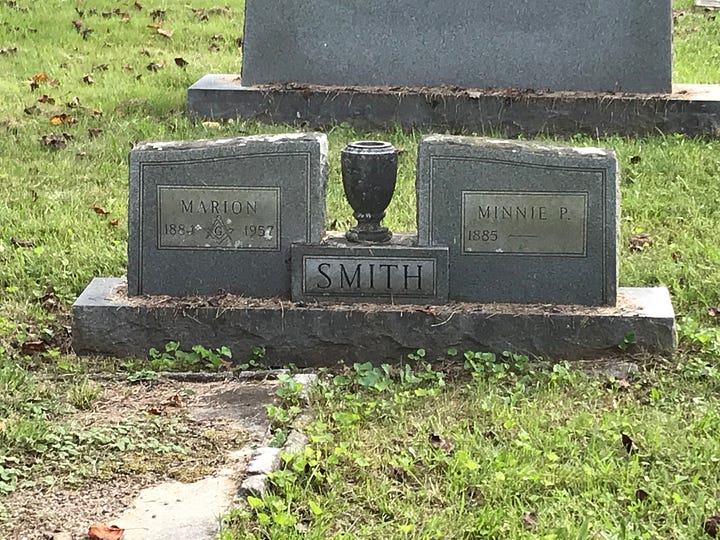
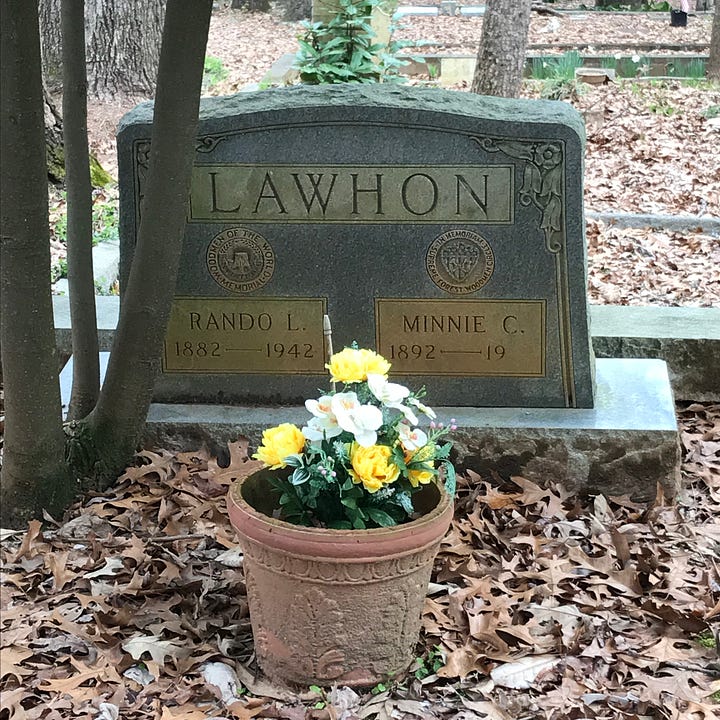
I wondered what had happened to these Minnies. Were they buried at these gravesites or had they ended up somewhere else?
In researching more, I found this problem of missing dates of death was common. At East View, there were many women (and some men), who had clearly passed away based on their dates of birth, but lacked a date of death.
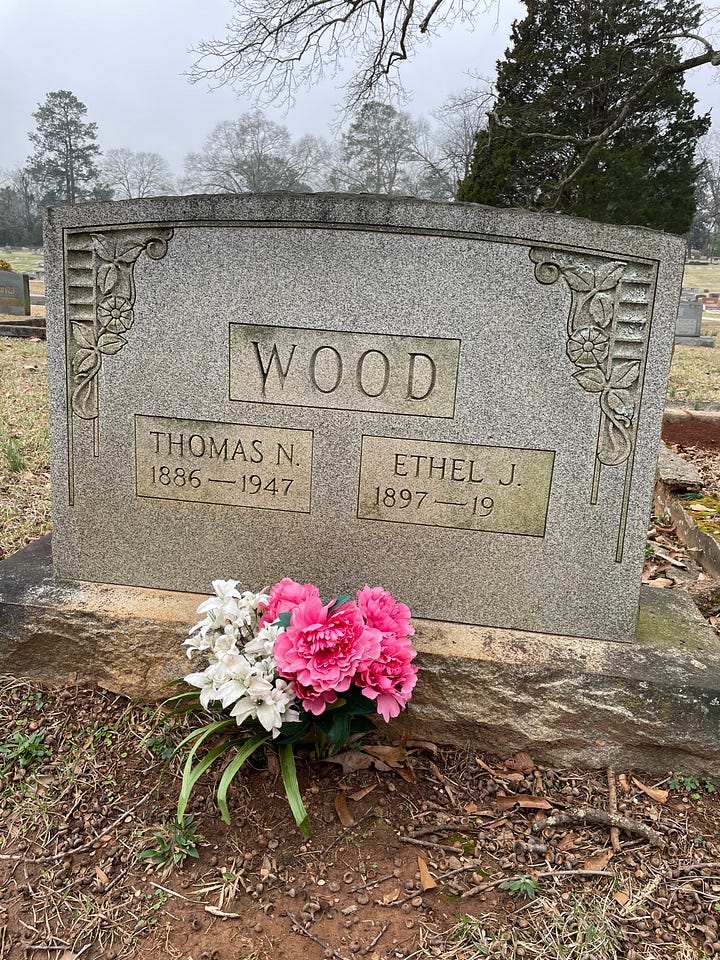
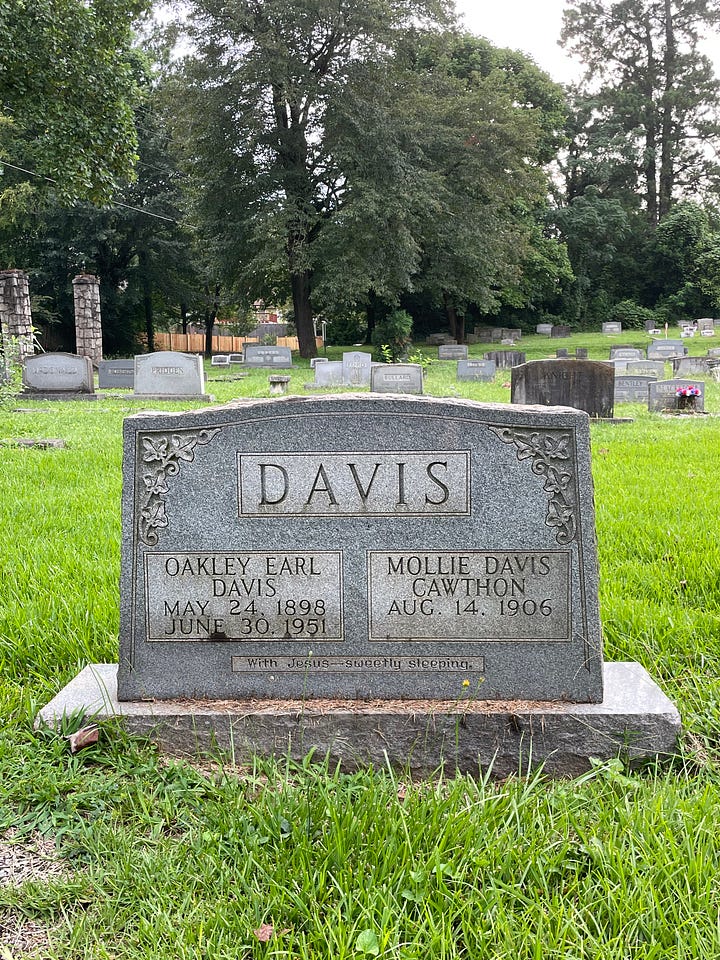
For me, there’s something so heartbreaking about a monument meant for eternity that seems unfinished—the permanent discrepancy between what the decedent or their family envisioned for the marker and what was executed.
A grave that winked
I was looking at dates on couple graves at East View Cemetery when I stumbled upon a husband-wife stone that included full information for both partners, but their dates of birth and death alone suggested a tragic tale. The couple died in the same year, 1958, and both were in their thirties at the time of their passing.
The weekend this grave caught my eye also happened to be a weekend where newspapers.com was offering free access to their Publisher Extra subscription tier, which includes newspapers still under copyright. I had the Basic subscription but found I was often frustrated by not being able to access more recent articles.
With Publisher Extra unlocked, I looked up the couple in the Atlanta papers and found their deaths were indeed tragic. It was a murder-suicide case. The couple, separated at the time, had met up in a gas station parking lot. An argument started between the two, the husband sent their three kids inside the station to buy drinks, and then he shot his wife and himself.1
I always felt more connected to the wife after learning about her fate.
Another tragic loss
East View has a few convenient gravel loops, and, for ease, I mainly stuck to these paths when I walked or ran there. One day, though, I ventured off course for some reason (probably someone coughing near me, this was COVID times). I came upon a broken monument that once had a statue of an angel or small child on it. The accompanying gravestone suggested it was a memorial for a young woman, Betty, who’d died at fifteen and was described as living “a life of character, ideal and godliness.”
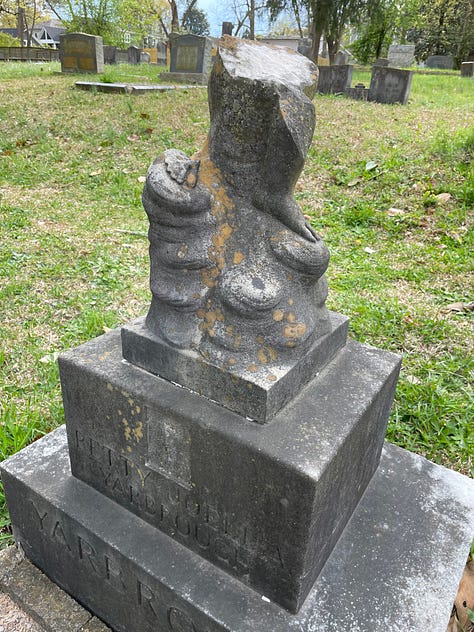
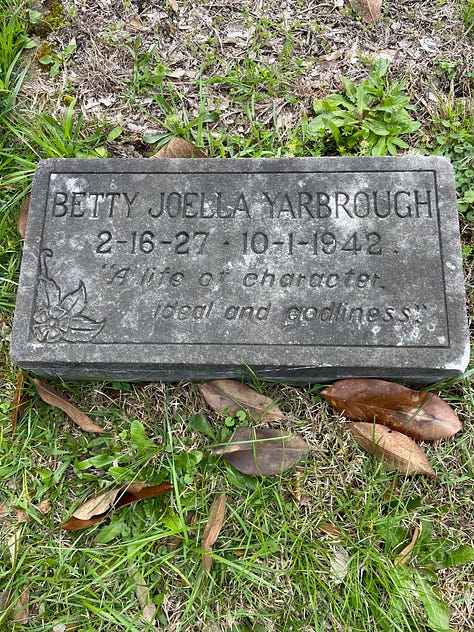
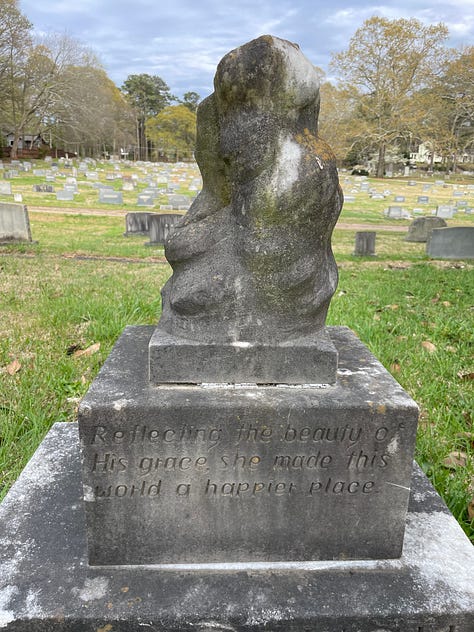
I looked her story up on newspapers.com and found she died of burn related injuries. She was dressing for school in front of a gas heater and her nightgown caught on fire.2 Her death was a tragic loss for the community. The epitaph on her monument says: “Reflecting the beauty of His grace, she made the world a happier place.”
Let me show you something
Another way I discover graves is when I run into one of my cemetery friends at one our favorite haunts (a.k.a., cemeteries), and they say, “let me show you something.”
This was how I learned about, Maggie, a twenty four year old woman who suffered a fate similar to Betty. In Maggie’s case, she was dressed as an angel for a performance when her costume caught on fire.3 She died in 1880 and is buried at Oakland Cemetery. Her epitaph reads: “OUR ONLY TREASURE.”
The Atlanta Constitution (Atlanta, Georgia). Thu, May 1, 1958, page 1.
The Atlanta Journal (Atlanta, Georgia). Thu, Oct 1, 1942, page 1.
The Atlanta Constitution (Atlanta, Georgia). Thu, May 13, 1880, page 4.





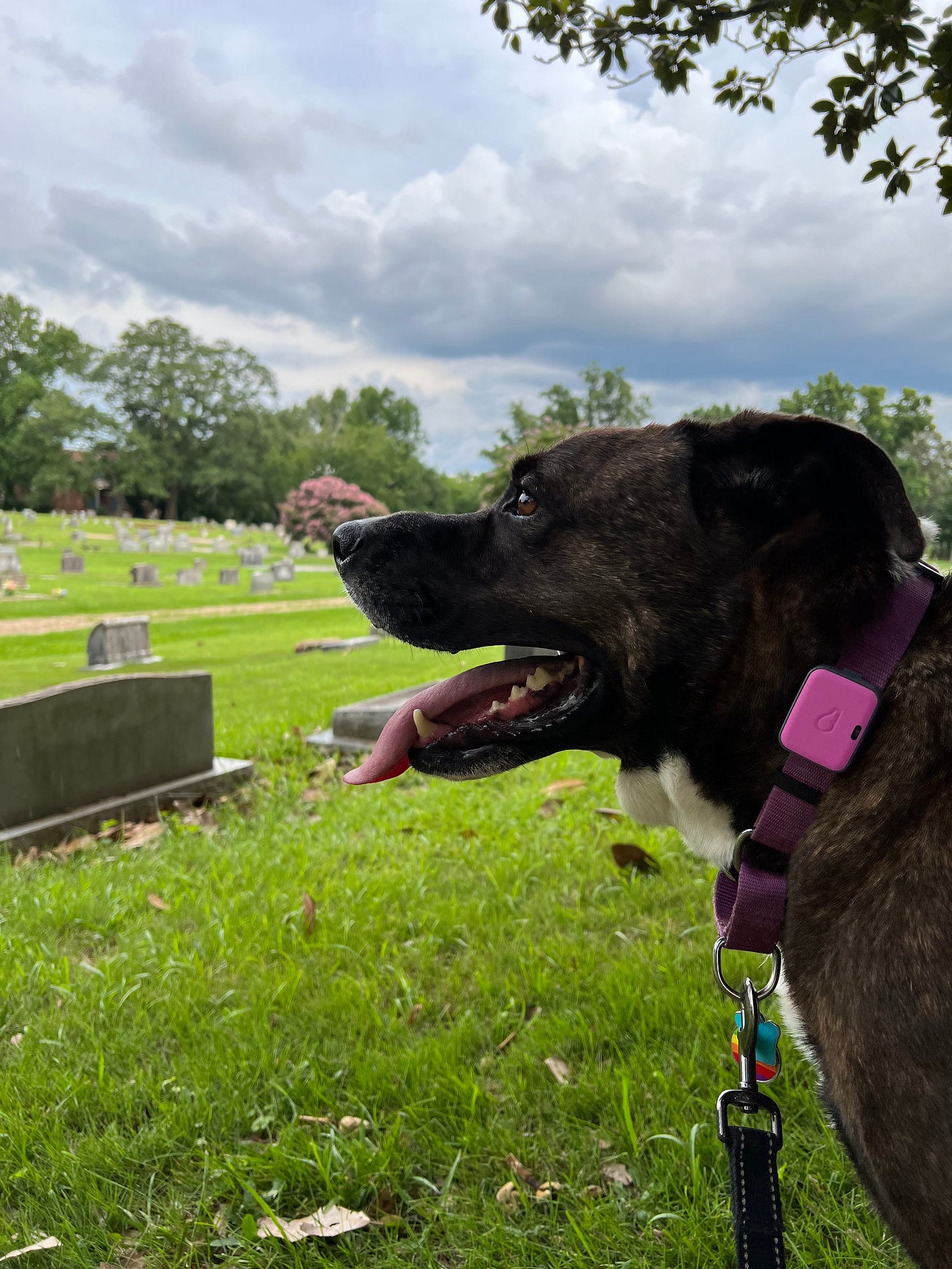
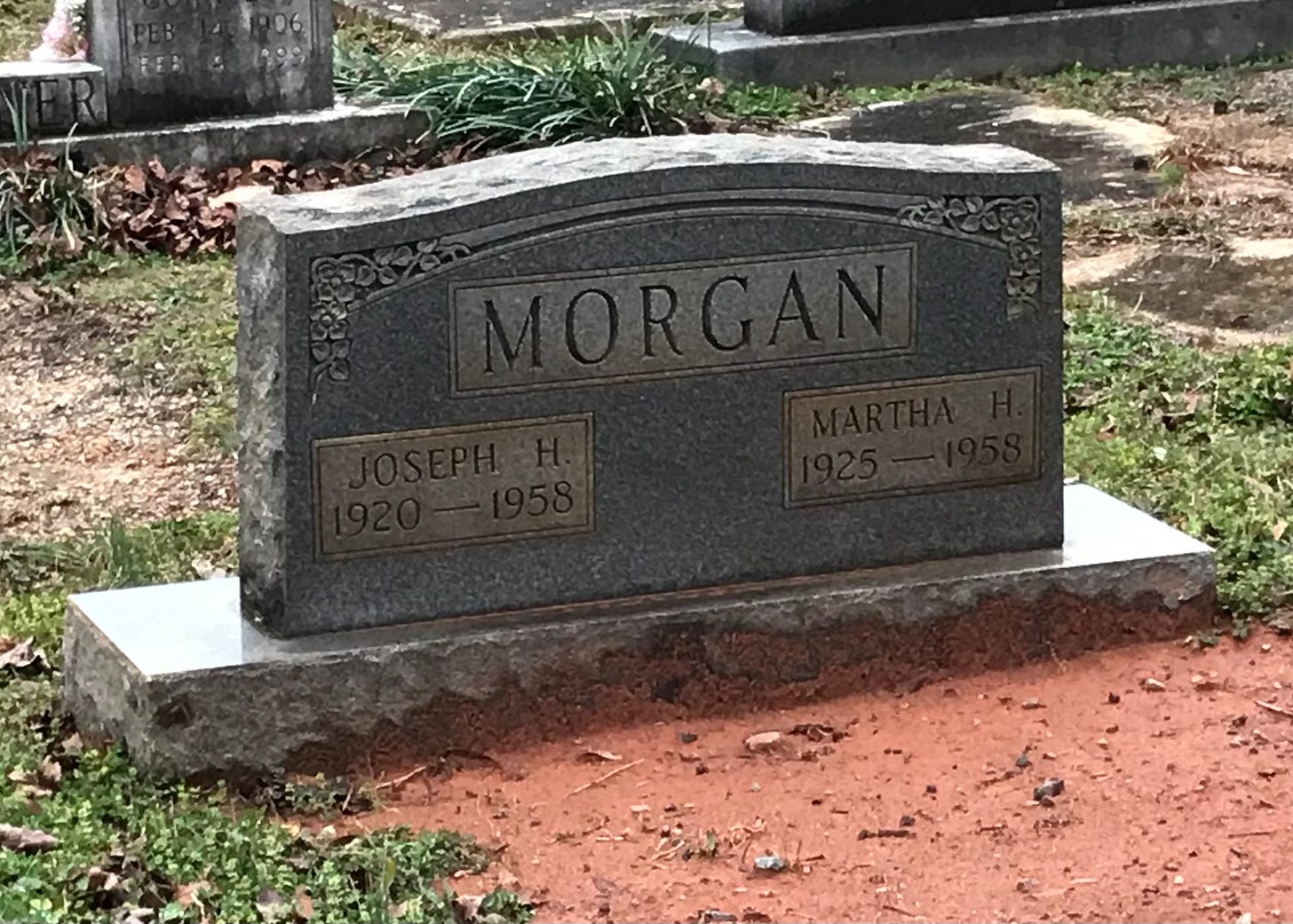

Me and mom had noticed the missing dates of death on some couple's graves and we wondered if maybe these people got remarried and buried with their second spouse. Wow, the story about the woman dressed up as an angel! That is wild!